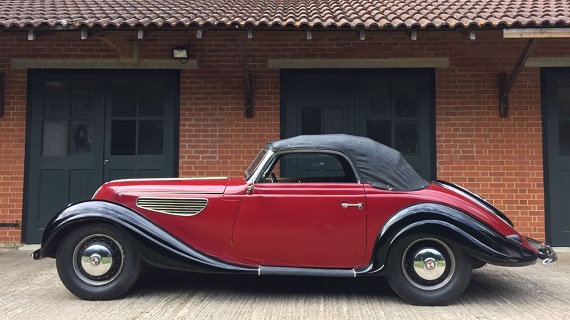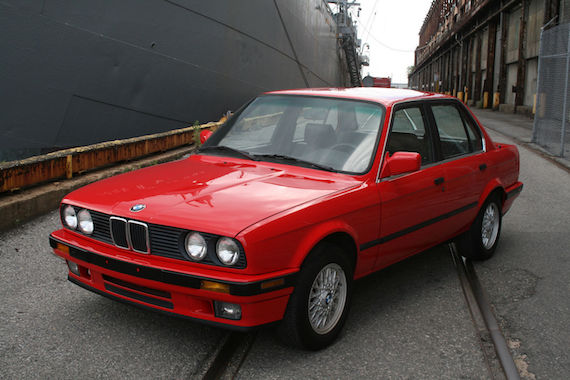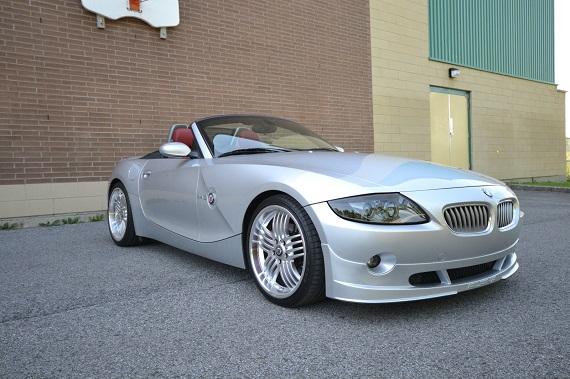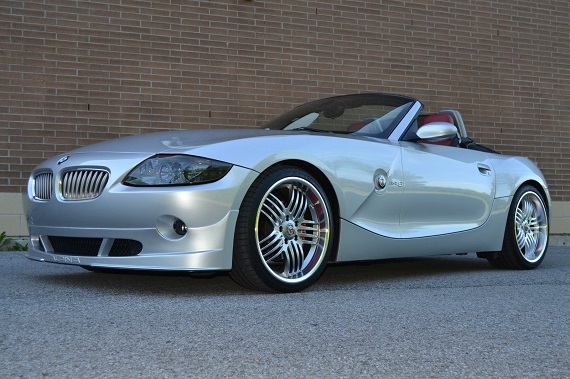World War II changed the map of Europe, and the post-War period was a strange rebuilding and re-allocation period which saw serious changes to some of the names you know today. Volkswagen, a brand that effectively hadn’t really existed before 1939 and the outbreak of war, found itself the benefactor of British intervention afterwards and became the company we know today. Mercedes-Benz, similarly, picked up the pieces and continued on. Auto Union and the companies of the four rings fell inside the Soviet area of control, and as a result many of the plans, factories and engineers were removed from Germany and sent deeper into Russian control. Then there was the strange plight of BMW. Prior to World War II, though BMW had been a very successful aircraft engine producer and motorcycle champion of Germany, they were a minor player in the automobile industry. Still, they had produced some beautiful and notable designs, including the successful sports car racer 328. Although technically Munich lay in the American area of Allied occupation, there would be an interesting future for BMW. Connections with the British Army allowed a pre-War BMW dealer from Britain to jump into the Munich factory, grab a bunch of plans and some engineers, and return back to the island nation. That would yield the Bristol 400 – a car so heavily influenced by BMW’s 326, 327 and 328 designs that they even retained the signature kidney grills. More strange, perhaps, was the BMW plant at Eisenach. Unfortunately for the city, though centrally located in Germany and not particularly far from Munich, it lay about 6 miles inside the Soviet control border. But their factory had all the plans for BMW’s road cars, so after the war, they turned on the lights and started pumping out BMWs not made by BMW. This, of course, resulted in a lawsuit, and in 1952 they were forced to change their name to Eisenacher Motorenwerke, or EMW. Like Bristol, they retained all of the signature BMW bits, including the Roundel. But since they were in Soviet controlled areas, the Roundel’s color changed from blue to red:
Tag: BMW
As I scour the ads each week for noteworthy vehicles to feature here on GCFSB, I come across a fair amount of E30 BMW M3s on the market. These original M3s are now the darling of the collector set. I was a bit intrigued by them when I was running my E30 325is two decades ago. Nowadays, they don’t do much for me. This is party due to my preference for the 2.5 liter inline-6 that powered my 325is and partly because their collectability has made them all but impractical for use as a daily driver. If you still want some E30 four cylinder goodness, why not check out this 318i for sale in Maryland? This car has undergone a partial restoration and is a non-sunroof model with a 5-speed manual, a combination suited for the purists out there.
CLICK FOR DETAILS: 1991 BMW 318i on eBay
1 CommentIf the B10 3.5/1 from earlier was overshadowed by the more powerful headline-grabbing BiTurbo, the Roadster S barely emerged from under the positively giant amount of shade cast by the Roadster V8. So outraged was the enthusiast world that Alpina would yank the S62 V8 and 6-speed out to be replaced by a 540 motor and automatic that you could easily have missed the lesser Roadster on offer from Buchloe. Indeed, far fewer of the Roadster S were produced than the Roadster V8; a scant 370 are reported to have been made. In typical Alpina fashion, the S model featured engine, suspension, interior and exterior upgrades. The N52 magnesium block engine was dropped in favor of the M52 punched out to 3.4 liters, with a resulting 300 horsepower and 5 second 0-60 times. 19″ Alpina Dynamic wheels – the same ones fit to its more famous brother – filled out the wheel wells, while Alpina’s unique front and rear spoilers helped to individualize the hunkered down attitude of the E85. Replete with unique interiors and the all-important enthusiast’s requisite manual, it was surprising that more attention wasn’t levied upon them, but such was the effect of the Roadster V8. Someone was paying attention, though, because they went to great lengths to copy the S design. This is not one of the 370 original cars, but it’d be hard for most to tell:
CLICK FOR DETAILS: 2003 BMW Z4 Alpina Roadster S Tribute on eBay
Comments closed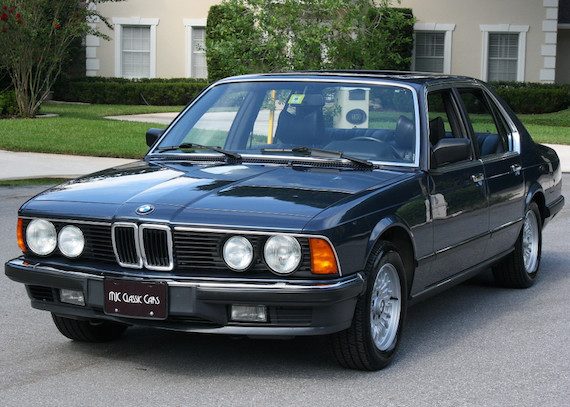 The E23 7-series is already a bit special, for two main reasons. First, as I mentioned when I wrote up a 733i a couple of weeks ago, you don’t tend to see them on the roads anymore. Second, the beautiful design, which shares a number of features with the shark-nosed E24 6-series coupe, matches anything put out by Mercedes-Benz in the same era in terms of elegance and style. That is not something that could always be said about BMW products, even if they were more fun to drive than their counterparts from Stuttgart. But this E23 is even more special, since it’s a gray market 745i.  Not available in the US, this high-performance model represented the top of the E23 lineup in Europe and came with a turbocharged version of the 3.4 liter inline six cylinder M30 engine (here called the M106) and a host of luxurious and high-tech (for the time) accessories. Very few of these come onto the market, and rarely do they do so in the kind of condition shown here.
The E23 7-series is already a bit special, for two main reasons. First, as I mentioned when I wrote up a 733i a couple of weeks ago, you don’t tend to see them on the roads anymore. Second, the beautiful design, which shares a number of features with the shark-nosed E24 6-series coupe, matches anything put out by Mercedes-Benz in the same era in terms of elegance and style. That is not something that could always be said about BMW products, even if they were more fun to drive than their counterparts from Stuttgart. But this E23 is even more special, since it’s a gray market 745i.  Not available in the US, this high-performance model represented the top of the E23 lineup in Europe and came with a turbocharged version of the 3.4 liter inline six cylinder M30 engine (here called the M106) and a host of luxurious and high-tech (for the time) accessories. Very few of these come onto the market, and rarely do they do so in the kind of condition shown here.
CLICK FOR DETAILS: 1985 BMW 745i on ebay
4 Comments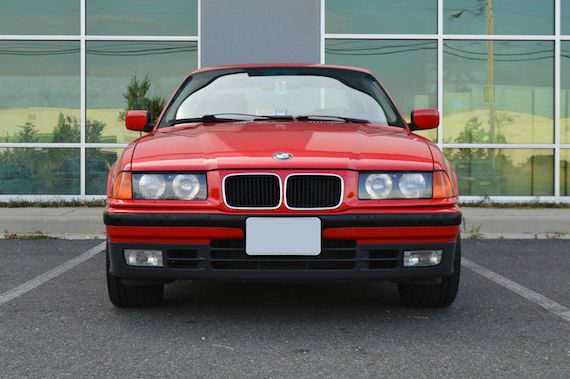 Time capsule cars are fascinating. It doesn’t matter whether they’re high-performance exotics or run of the mill, entry level econoboxes, there’s always something deeply weird and alluring about finding a car built decades ago that still looks brand new today. It’s even more interesting when that car is an E36. This generation of 3-series will, I think, one day be regarded as a classic, but you’d be forgiven for doubting it, since so many of them out there for sale today are such dogs. For every nice example on the market there are ten cars that have been driven hard and put away wet. This ’93 325iS however looks pretty much the same as I imagine it did the day it left the showroom, which is not too surprising since it only has 34k miles on the odometer.
Time capsule cars are fascinating. It doesn’t matter whether they’re high-performance exotics or run of the mill, entry level econoboxes, there’s always something deeply weird and alluring about finding a car built decades ago that still looks brand new today. It’s even more interesting when that car is an E36. This generation of 3-series will, I think, one day be regarded as a classic, but you’d be forgiven for doubting it, since so many of them out there for sale today are such dogs. For every nice example on the market there are ten cars that have been driven hard and put away wet. This ’93 325iS however looks pretty much the same as I imagine it did the day it left the showroom, which is not too surprising since it only has 34k miles on the odometer.

